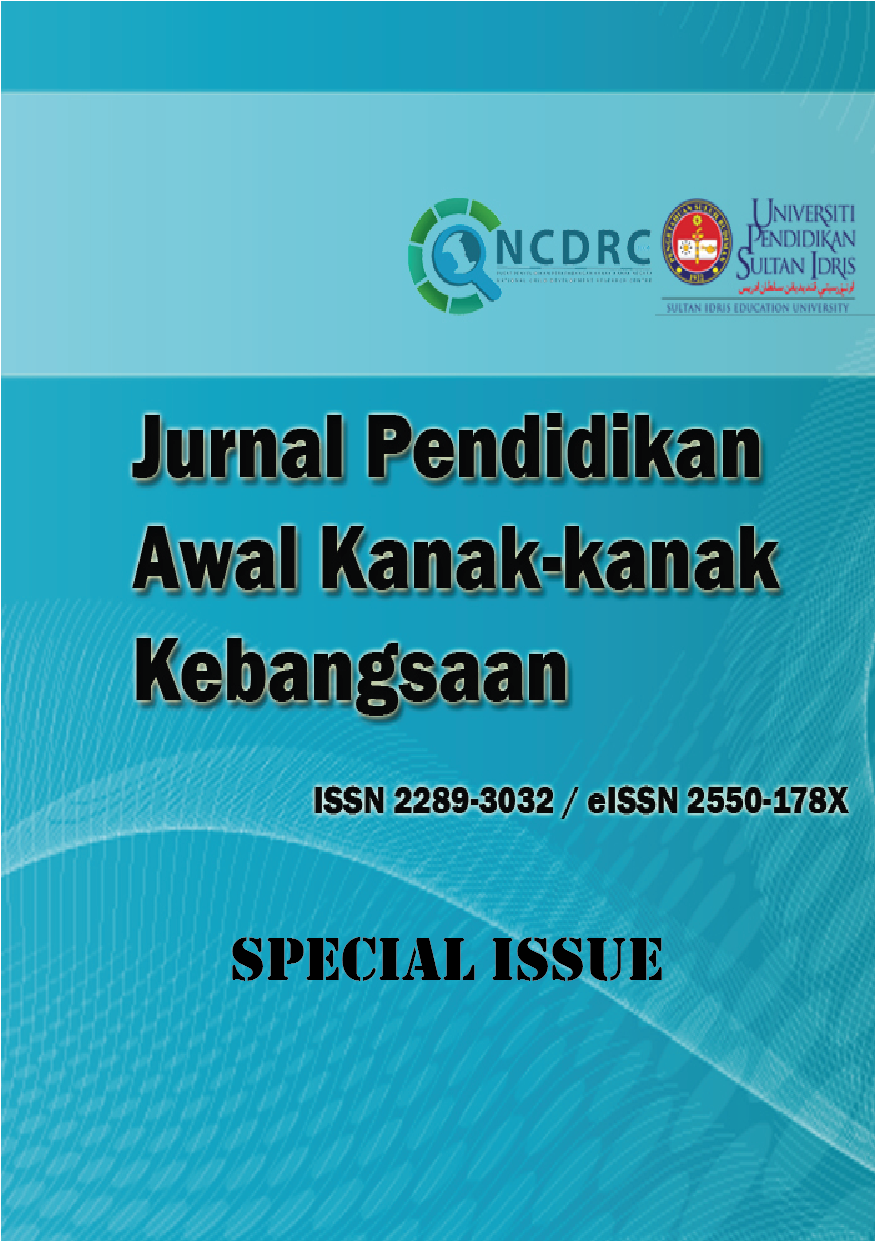Optimizing the Kindergarten Playing Activities During Pandemic of COVID -19 Through Drive-Thru Services for Children 5-6 years old
DOI:
https://doi.org/10.37134/jpak.vol11.sp.7.2022Keywords:
5-6 years old, drive-thru, service modelAbstract
This research was conducted to increase play activities through a drive-thru service model for children aged 5-6 years in Gorontalo as a learning innovation during the COVID-19 pandemic and also the new normal. This study uses the Action research method. The data analysis technique used in this study used mixed qualitative and quantitative data analysis. Previously, preliminary research or field studies were carried out to obtain initial data regarding the learning process of children aged 5-6 years during the pandemic. Next, do the treatment for later in the reflection. This research was conducted in two cycles consisting of three meetings in one cycle: planning, implementation, observation, and reflection. This research lasted for 3 months. Data were collected through interviews with teachers, observations of children's play activities, and documentation of drive-thru service activities. The results showed that with the drive-thru service there was a pleasant learning atmosphere, the learning process went according to the health protocol so that children could still come to school but with time restrictions and restrictions on the number of children, from the results of the cycle I to Cycle II there was an increase, performance indicators were achieved. namely 75% of children's playing activities with details in the first cycle of each indicator, including children playing 23%, involvement of children playing 38%, and involvement of children completing playing tasks 38%. In the second cycle, each indicator has reached 76%. It is concluded that the drive-thru service can increase the playing activities of children aged 5-6 years.
Downloads
References
Anderson. Lorin W. 1989, The Affective Teacher-Study Guide and Readings USA: McGraw-Hill Publishing Company, h.39
Budimansyah, Dasim, 2002, Model Pembelajaran dan Penilaian Berbasis Portofolio, Bandung: Genesindo, h.4
Canning, Natalie, 2011, Play and Practice: in the early year's foundation stage London: Sage Publications. Ltd. h.9
Catron Carol E dan Allen, Jan 1999, Early Childhood Curriculum: A Creative play Model New Jersey: Prentice-Hall, h.4
Charles D. Hopkins and Richard L. Antes (1993), Classroom Measurement and Evaluation Illinois: F.E. Peacock Publishers, Inc, h. 5-6
Crain, William, 2007, Teori Perkembangan Konsep dan Aplikasi Yogyakarta: Pustaka Pelajar, ,h.319
D. Sudjana S. 2000, Strategi Pembelajaran Pendidikan Luar Sekolah Bandung: Falah Production, , h. 96
Dodge, Diane Trister, Colker, Laura J.dan Heroman, Cate,2002, The Creative Curriculum for preschool Washington Dc: Teaching StrategiesInc, h.15
Eliason Claudia dan Jenkin, Loa 2008, A Practical Guide to Early childhood curriculum Ohio: Pearson Merril Prentice Hall, h.25
Fleer, Marilyn, 2010 Early Learning and Development: Cultural-Historical concepts in playing New York: Cambridge University Press, h. 101
Forst, Joe I. Wortham, Sue C. dan Reifel, 2012 Stuart Play and Child Development 4th Ed. New Jersey: Pearson, h.246
Goldstein, Jeffrey, 2012, Play in children development, healths, and well being Toy Industries Europe,h.5
Hadis, Fawziah Aswin, 1996, Psikologi Perkembangan Anak Jakarta: Depdikbud. h.52
Han, Lu The Service Process of McDonald's Drive-Thru, Essay. h.4
Hill, Keziah, Qiao, Fenxiang, Azimi, Mehdi dan Yu, Lei 2016, An Evaluation of the Effects of Drive-Through Configurations on Air Quality at Fast Food Restaurants, Journal of Civil & Environmental Engineering volume 6, issue 3,2016DOI: 10.4172/2165-784X.1000235 https://en.unesco.org/news/covid-19-book-drive-thru-wonju
Hughes, Fergus P (2010). Children, Play, and Development, Sage Publication, Inc: 198
Hughes, Fergus P. 2003contamporary perspective on play in early childhood education, Greenwich: CT. Information Age Publishing, h.21
Hurlock, Elizabeth B. 2001, Perkembangan Anak Jilid II. Jakarta: Erlangga, h. 321.
McNiff, Jean, (1992), Action Research Principles And Practice London: the University of Bath,h.27.
Smith Patricia L and Ragan, Tillman J. . 2006. The Impact of R.M. Gagne’s Work on Instructional Theory. The University of Oklahoma,h.150
Sudono, Anggani, 2000, Sumber permainan dan Alat permainan Jakarta ; Grasindo,h.1
Suparman, Atwi, 1997,Model-model Pembelajaran Interaktif. Jakarta: STIE LAN PRESS. h. 40
Tedjasaputra, Mayke, 2001,Bermain, mainan, dan permainan, Jakarta : Grasindo,h.21-23
Undang undang Sistem pendidikan Nasional nomor 20 tahun 2003
Woolfolk, Anita 2007, Educational Psychology, Pearson Education Inc. h.210
Wortham, Sue C. 2005, Assessment in Early Childhood Education New Jersey, Pearson





